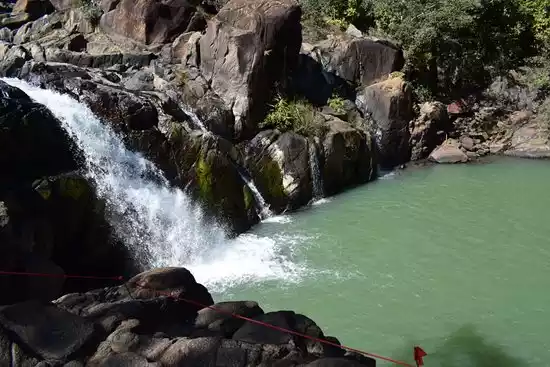Comprehensive Guide to Latehar District: Geography, History, Culture, and More
Introduction
Latehar, a district in the Indian state of Jharkhand, is a region rich in natural beauty, cultural heritage, and historical significance. Nestled amidst lush forests and picturesque landscapes, Latehar offers a unique blend of tribal traditions and modern developments. This article delves into the various aspects of Latehar, including its geography, demography, culture, cuisine, history, notable personalities, and administrative setup.
Geography of Latehar
Location and Boundaries
Latehar is located in the north-western part of Jharkhand, bordered by the districts of Lohardaga and Gumla to the east, Palamu to the north, and Garhwa to the west. The district covers an area of approximately 3651.59 square kilometers.
Topography and Climate
The district is characterized by undulating terrains, dense forests, and a network of rivers and streams. Prominent rivers include the Koel, Chaupat, and Amanat. The climate of Latehar is predominantly tropical, with hot summers, a monsoon season with heavy rainfall, and mild winters.
Natural Resources
Latehar is endowed with rich natural resources, including coal, bauxite, and limestone. The extensive forest cover is home to diverse flora and fauna, making it a significant ecological zone in Jharkhand.
Demography
Population Statistics
As per the latest census, Latehar has a population of approximately 725,673. The population density is about 199 people per square kilometer.
Ethnic Composition
The district is home to a mix of tribal and non-tribal communities. Major tribal groups include the Oraon, Munda, and Gond, each with distinct cultural practices and languages.
Literacy and Employment
The literacy rate in Latehar is around 59%, with ongoing efforts to improve educational facilities. Agriculture remains the primary occupation, supplemented by forestry, mining, and handicrafts.
Cultural Heritage
Tribal Traditions
Latehar’s cultural landscape is predominantly shaped by its tribal heritage. The Oraon, Munda, and Gond tribes have rich traditions of folk music, dance, and art. Festivals like Sarhul, Karma, and Sohrai are celebrated with much enthusiasm, reflecting the deep connection with nature and agrarian lifestyles.
Languages and Festivals
Hindi is the official language, but tribal languages like Kurukh (Oraon), Mundari, and Sadri are widely spoken. Key festivals include Diwali, Holi, and Chhath, which are celebrated alongside traditional tribal festivals.
Cuisines of Latehar
Latehar's cuisine is a delightful blend of tribal and regional influences. Traditional dishes include:
- Handia: A fermented rice drink, popular among the tribal communities.
- Thekua: A sweet snack made from wheat flour, jaggery, and ghee, often prepared during Chhath Puja.
- Dhuska: A savory dish made from rice and lentil batter, deep-fried and served with curry.
Local ingredients like bamboo shoots, jackfruit, and various forest herbs add unique flavors to the cuisine.
Historical Significance
Ancient and Medieval History
Latehar has a rich historical background, with evidence of ancient human settlements and medieval fortifications. The region has witnessed the rise and fall of various dynasties, including the Nagvanshi and Chero rulers.
Colonial Era
During the British colonial period, Latehar was part of the Palamu district and played a significant role in the Indian independence movement. Several local leaders and tribal chiefs actively participated in the struggle for freedom.
Notable Personalities
Poets and Authors
Latehar has produced several notable poets and authors who have contributed to Jharkhand's literary heritage. These include:
- Pandit Raghunath Murmu: Known for his contributions to the development of the Ol Chiki script for the Santali language.
- Mahua Maji: A prominent contemporary writer who has depicted the life and struggles of tribal communities in her works.
Freedom Fighters
The district honors its freedom fighters, including leaders like Bhagirath Manjhi and Rani Lakshmi, who played pivotal roles in the resistance against British rule.
Administration
Administrative Structure
Latehar district is administratively divided into several blocks, including Latehar, Chandwa, Balumath, and Barwadih. The district headquarters is located in the town of Latehar.
Local Governance
The district administration is headed by the Deputy Commissioner, who oversees various development programs and law and order. Panchayati Raj institutions play a crucial role in local governance, ensuring grassroots-level participation in decision-making.
Tourism in Latehar
Natural Attractions
Latehar boasts numerous natural attractions, including:
- Betla National Park: Known for its diverse wildlife, including tigers, elephants, and various bird species.
- Lodh Falls: One of the highest waterfalls in Jharkhand, offering breathtaking views and trekking opportunities.
- Netarhat: A hill station famous for its stunning sunrise and sunset views, often referred to as the "Queen of Chotanagpur."
Cultural Sites
The district is home to several cultural and historical sites, such as:
- Palamu Fort: A historic fort with rich architectural and historical significance.
- Nageshwari Temple: An ancient temple dedicated to Goddess Durga, attracting pilgrims from across the region.
Suggested Diagram
Here is a suggested diagram illustrating the administrative structure of Latehar district:
Conclusion
Latehar district is a region of immense natural beauty, cultural richness, and historical importance. Its unique blend of tribal traditions, scenic landscapes, and significant historical sites make it a fascinating destination for both researchers and tourists. Continued efforts in education, infrastructure, and sustainable development will further enhance the district's prospects, preserving its heritage while embracing modernity.
